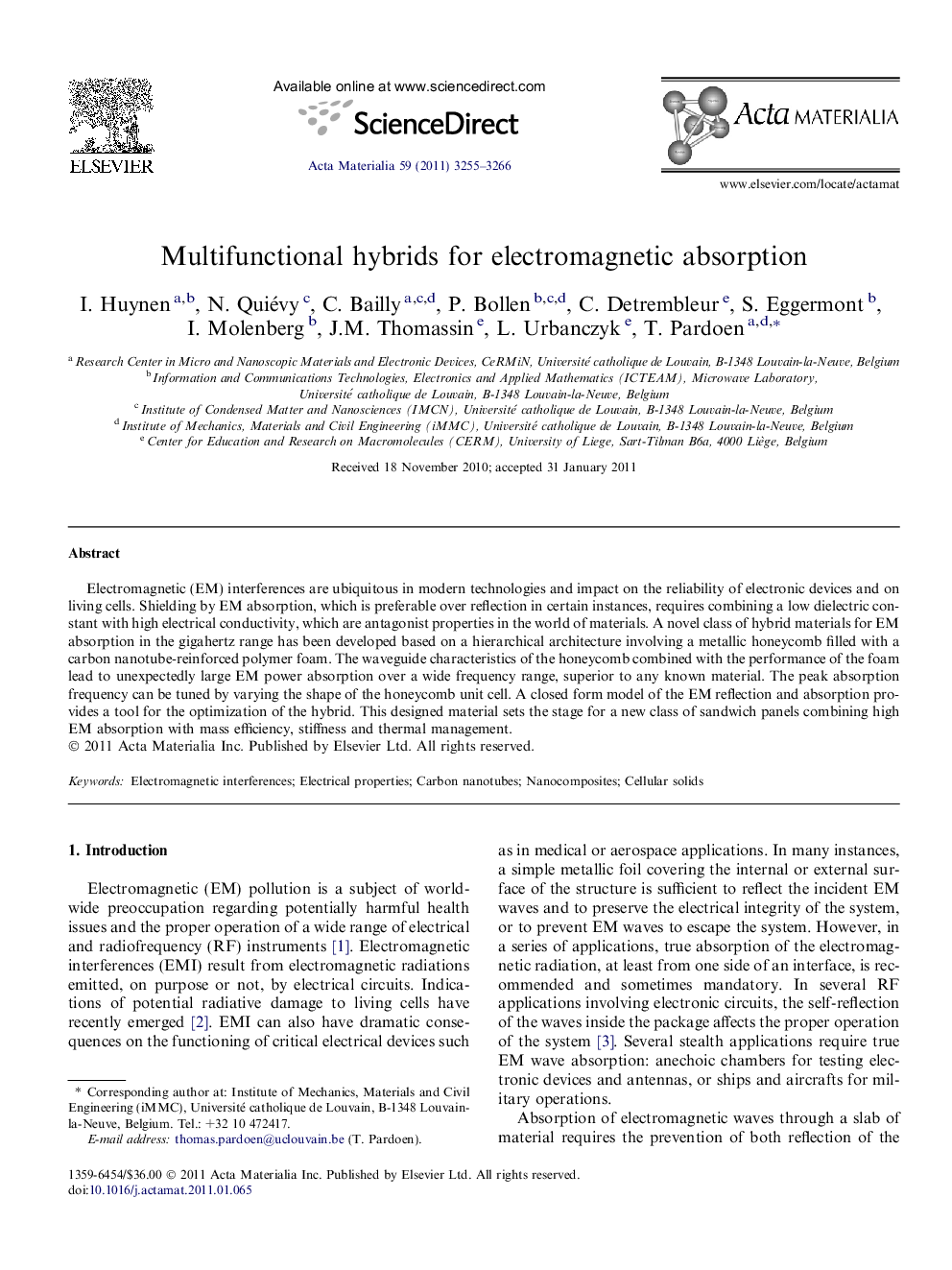| Article ID | Journal | Published Year | Pages | File Type |
|---|---|---|---|---|
| 1447207 | Acta Materialia | 2011 | 12 Pages |
Electromagnetic (EM) interferences are ubiquitous in modern technologies and impact on the reliability of electronic devices and on living cells. Shielding by EM absorption, which is preferable over reflection in certain instances, requires combining a low dielectric constant with high electrical conductivity, which are antagonist properties in the world of materials. A novel class of hybrid materials for EM absorption in the gigahertz range has been developed based on a hierarchical architecture involving a metallic honeycomb filled with a carbon nanotube-reinforced polymer foam. The waveguide characteristics of the honeycomb combined with the performance of the foam lead to unexpectedly large EM power absorption over a wide frequency range, superior to any known material. The peak absorption frequency can be tuned by varying the shape of the honeycomb unit cell. A closed form model of the EM reflection and absorption provides a tool for the optimization of the hybrid. This designed material sets the stage for a new class of sandwich panels combining high EM absorption with mass efficiency, stiffness and thermal management.
► EM absorption requires low dielectric constant and ∼1 S/m electrical conductivity. ► New hybrids were processed with CNT-filled polymer foam inserted in Al honeycomb. ► The EM absorption in the GHz range is superior to any known material. ► A closed form model is used to guide the design of the hybrid. ► The architectured material is light with potential for thermal management.
